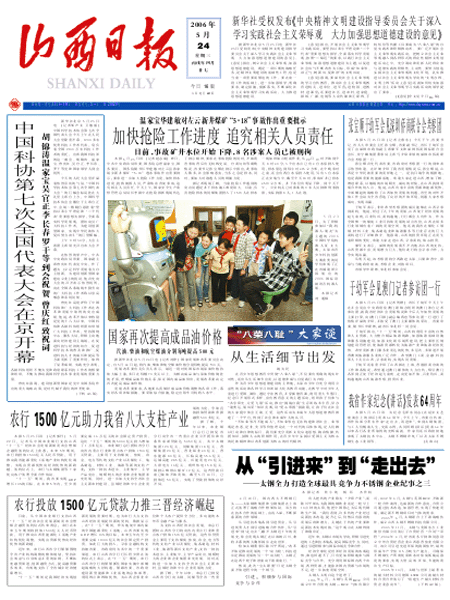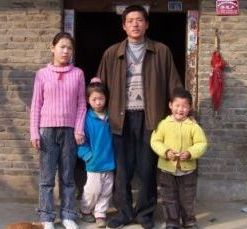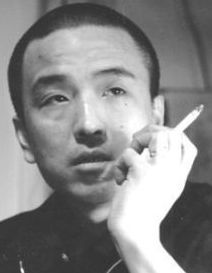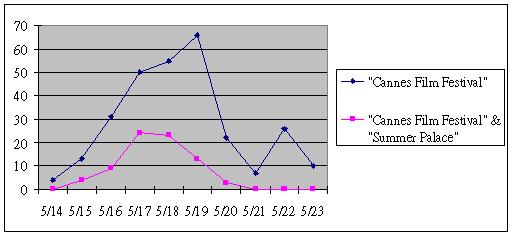Chinese media debate information disclosure as reporter sues Shanghai City Planning Bureau
After news late last week that a reporter brought an information non-disclosure lawsuit against a government office in China’s financial center of Shanghai, some media in China asked whether this might push China toward a more open society. The reporter was using “Shanghai Municipal Government Ordinance on Openness of Information”, a local ordinance on government information disclosure passed back in 2004, to support his case. Southern Metropolis Daily, one of the country’s top newspapers, called the pending lawsuit “historic”. “We salute this reporter’s courage, and even more we hope people pay attention to this new topic of discussion”, the paper said. [PDF of Beijing Youth Daily editorial, June 3 here:pdf_article651.pdf]. [PHOTO: The State Council announces release of China environmental report in the spirit of disclosure, June 5, 2006, from Central People’s Government website].
[UPDATE: CMP’s mainland media sources are confirming the reports we cover here are so far the only that have appeared on this case in China, although the original coverage, by China Youth Daily, was picked up by a handful of other papers. There is apparently no national ban or limitation on coverage, but Shanghai media have avoided the story altogether, which may suggest a local ban is in force.]
This has all the hallmarks of a great story — a little guy up against recalcitrant, entrenched leaders, the question of important new legislation this year (the State Council is considering a national mandate for disclosure of government information), the perennial questions of political reform and free speech, etc. There was coverage by Hong Kong’s Ming Pao and Apple Daily, who regurgitated the original China Youth Daily story – and blogger ESWN (of course) picked up the basics from Ming Pao.
The critical question here is what impact cases like Ma Cheng’s, and the attending publicity (should coverage continue to be permitted), could potentially have on A) the public debate over disclosure of government information in China, B) on the effective implementation of local ordinances as well as, possibly, the national one, and C) on the perceived role of journalism in China. The case could provide greater impetus for action in the State Council, which entered a proposed “Ordinance on Government Information Release” (政府信息公开条例) into this year’s legislative calendar.
Hu Shuli, managing editor of Caijing magazine, wrote of the proposed State Council ordinance in April this year that “when looking back again after thousands of years, Chinese people will see that today is another new milestone in their history” [SEE “The Imperative of Information Freedom”, by Hu Shuli, translated Far Eastern Economic Review, May 2006, p. 62-63].
After government suppression of information about the SARS epidemic in 2003, public access to information became a more immediate concern for Chinese. In late 2003, the city of Guangzhou became the first to implement a local ordinance on information disclosure. The municipality of Shanghai came next, followed by Hubei, Jilin and Jiangsu provinces. Responding to public incidents, various government offices, such as the State Food and Drug Administration, issued their own ordinances or regulations on information disclosure.
The problem, as ever in China, is making the government stand by the letter of its own laws and regulations. The Ma Cheng case, which domestic Chinese media are saying is the “first time ever in China a reporter has sued a government office for violating his right to carry out reporting”, is one attempt to press the government to make good on its promises.
Behind this case about public disclosure of government information is a debate about the role of journalism in China. One legal expert quoted by domestic media said that Chinese citizens are the intended target of the disclosure ordinances, and that journalists using the ordinances as journalists per se may find the way blocked legally. Southern Metropolis Daily related the case directly to the question of protections for journalism.
The first report on the Shanghai case came from China Youth Daily, a newspaper published by the Chinese Communist Youth League on June 2. It included comments from a Fudan University professor about the probable success of a lawsuit as either a “citizen” or a “journalist”. Also interesting is Ma Cheng’s claim that his request for a media interview was treated by one Shanghai government office as a petition for redress, which might suggest either confusion as to how media requests should be handled or deliberate abuse of the petitions system to put journalists off:
China Youth Daily, June 2, 2006 – “The final result is not important – the crux is really making sure the relevant [government] departments attach importance to the right of journalists to do reporting.” Today Ma Cheng (马骋), a reporter for the law and politics section of a Shanghai newspaper told this reporter by telephone that he is suing the City Planning Bureau of the Shanghai Municipal Government for not providing access to information, and that the case has already been accepted by Shanghai’s Huangpu District People’s Court. This is the first time ever in China that a reporter has sued a government office for violating his right to report.
Ma Cheng told this reporter he had carried out extensive reporting of a story and on April 18 faxed his interview outline to the Shanghai City Planning Bureau. The bureau had never responded, and on April 23 sent a formal written interview request to the Shanghai City Planning Bureau asking them to provide public records in accordance with “Shanghai Municipal Government Ordinance on Openness of Information” [in Chinese here]. Once again he was ignored.
In filing his case, Ma Cheng asked the court to rule that Shanghai’s City Planning Bureau open up the government information he had requested in accordance with the “Shanghai Municipal Government Ordinance on Openness of Information”.
In a letter addressed to the All-China Journalist’s Association, Ma Cheng said that in recent years as he reported stories he frequently was ignored by various government offices. Some offices [he said] used methods against laws and regulations to limit news reporting, making journalists unable to exercise their right to report (采访权).
On one occasion Ma Cheng abided by the regulations of a particular government office in Shanghai and submitted a written interview request. Little did he know the a few days later he would receive in the post from this office a “Letters and Calls Confirmation Slip” saying his request was being handled as a petition matter and that “according to the ‘Petition Statute’ offices handling petitions must send a written reply [to the petitioner] within 60 days of receiving the request, and in cases of extension notify [the petitioner] of the status of the case”.
The “Shanghai Municipal Government Ordinance on Openness of Information”, implemented in May 2004, says that except in cases where disclosure is prohibited, government information regarding the economy, administration of society and public services should be disclosed or provided in when requested.
One month after the “Provision” took effect, 70 year-old Shanghai resident Dong Ming filed a lawsuit against the Real Estate Bureau of Shanghai’s Xuhui District alleging “government non-disclosure of information” after being denied access to real estate asset records. This case was called “the first government information disclosure case” [in China]. But Dong Ming eventually lost his case.
A proposed “Ordinance on Government Information Release” has made it into the State Council’s legislative calendar for this year. This “Ordinance” would make government disclosure of information mandatory, with disclosure the rule and non-disclosure the exception, changing the secretive prior rule of “secrecy on principle, disclosure on exception”.
Huang Hu, an expert on laws and regulations at Fudan University’s School of Journalism, said Ma Cheng would have no problem bringing his case for government non-disclosure before the court in the capacity of a civilian, because of the “Shanghai Municipal Government Provision on Openness of Information”. But alleging before the court that a government office violated his right to access information as a journalist would have little legal basis. This is because in China, and indeed outside China, there are no specific regulations addressing the journalist’s right to reportage, and government offices were under no legal obligation to accept approaches from news reporters. “The object of [these regulations concerning] information disclosure is the citizen, but do not mean the government is under any obligation to release information to journalists”
In the past, some within the industry have pointed out that the media are not organs representing the will of citizens and are not the legal agents of the people. In the obtaining of information, journalists do not enjoy any special privileges not accorded to citizens. While their profession demands that they must pay attention to the affairs of government, they are not carrying out the work of the state in gathering such government information. Because of this, when being denied information, media cannot take legal action in the capacity of plaintiff. Reporters may only sue in the capacity of citizens. This means that even if a court hands a victory to the reporter, their decision will in no way mean information must be made available to the media in question. Therefore, legal victories for journalists per se lose much of their significance.
… Ma Cheng told this reporter that his suit was filed in accordance with the “Shanghai Municipal Government Provision on Openness of Information” and mainly seeks disclosure of information, not emphasizing his right to reportage as a journalist. Of course, he also submitted a letter explaining his actions to the All-China Journalist’s Association, saying he was seeking to “test the use of civil law for recourse in the rights of journalists to conduct reportage”.
The next day, Beijing Youth Daily, the newspaper of the Beijing Communist Youth League, ran the following piece on its editorial page. The article was written by Yang Shou (杨涛), a prosecuting attorney in Jiangxi Province:
HEADLINE: The ice-breaking significance of the government disclosure case
Beijing Youth Daily, June 3, 2006 — [First paragraph is a summary of case as reported in China Youth Daily… In regards to right to report, the law does not say anything explicit. The general theory holds that the right to report is a right (权利) and not a power (权力). Therefore, the act of reporting by a journalist customarily requires consent of the person being interviewed. Exceptions are made, however, for information concerning the public interest – citizens should have a right to know information, and journalists have a right and duty to report it.
It should be said that Ma Cheng’s lawsuit is reasonable, proper and lawful. The “Shanghai Municipal Government Ordinance on Openness of Information” stipulates that information concerning planning issues, such as city planning and land use, belong to the category of information that should be made available to the public. Well then, if Ma Cheng cannot access the abovementioned information, he has reason to seek information and interviews with the Shanghai City Planning Bureau, and if his requests are denied, he can act in accordance with the provisions, which say: “Citizens, legal persons and other organizations that feel the government has violated the concrete forms of administrative conduct prescribed in this document and violated their legal rights and benefits, may request reconsideration in accordance with the law, and if proper reconsideration is not made may bring legal action; citizens, legal persons and other organizations may file a lawsuit directly with the People’s Court”.
On the one hand, Ma Cheng’s lawsuit strives for the citizen’s right to know. Lately, a number of local governments have come out with statutes on disclosure of government information, but a national “Ordinance on Government Information Release” has never been created. Citizens’ means of obtaining government information are imperfect. Only by going through a succession of concrete lawsuits can we make sure these local initiatives work, in this way bringing the public’s attention [to the issue] and promoting the creation of a national law and making sure the public’s right to know becomes a reality. One the other hand, his lawsuit is strives for the right for journalists to conduct reporting. China does not yet have laws protecting news reporters, and because the law makes no provisions on protection of the rights of journalists to conduct interviews, journalists are denied interviews by government offices and their employees, and sometimes even attacked. Through the use of specific legal cases like [Ma’s] the idea of protecting journalists’ right to report will receive the attention it deserves from society, allowing the media to be more effective in carrying out their watchdog role. I believe that striving after these rights will promote more timely and direct information throughout society, serving the public interest and avoiding harm. It will make news reports more impartial, free, and more importantly, members of society can then more effectively obtain information, and be therefore more equipped to safeguard their legal rights.
On the same day as the Beijing Youth Daily editorial, Southern Metropolis Daily ran its own in page 2. The editorial directly addresses the implications of Ma’s case for the work of journalists and seeks to dissolve distinction between “journalist” and “citizen” in the debate over information disclosure. It also discusses “supervision of public opinion” (舆论监督), the government mandate for the media to supervise lower-level officials, businesses and other aspects of society. The implication is that enforceable laws and regulations on disclosure would better enable reporters to carry out this social duty:
Southern Metropolis Daily, June 3, 2006 – According to a report by Beijing Youth Daily, a Shanghai reporter named Ma Cheng has sued Shanghai’s City Planning Bureau for repeatedly avoiding his requests for an interview for a story he was working on. In his suit, Ma requests that the bureau disclose government information in accord with the “Shanghai Municipal Government Ordinance on Openness of Information”. This case has already been accepted by Shanghai’s Huangpu District People’s Court. This is China’s first case of a reporter suing a government office for violating his right to report – its meaning is no trivial matter and deserves the attention of the nation.
The understand the importance of the case, one first has to be clear about the history and current practice of information disclosure in China. For a long time, we have been taught in our educational curriculum that protecting national secrets is the responsibility of all citizens, and that overlooking or playing down of the information demands of the people was an important function of the government. Along with the opening of society and the global information age, the ordinary understanding is that governments make the transition from a social control orientation to a service orientation and that official business be discussed openly.
[Summary of local ordinances since SARS in 2003 and this year’s possible national ordinance…
In accordance with modern principles of governance, these [local] rules and regulations are a mandate for public disclosure of government information – the idea is to make disclosure the rule and non-disclosure the exception. The scope of disclosure should be the large and cases of government secrecy rare, removing the gap between government disclosure and public demand for information. Using the news media to release government information is without a doubt the first choice in meeting the above-stated needs in today’s society – it’s the same in countries throughout the world. To meet the demands of regulations on government information disclosure, Shanghai and other local governments have already established news spokesperson systems, regularly issuing government information to news media. Also without a doubt, the news media are the first choice for citizens to learn government information.
However, due to the sustained influence of the social control model of governance … the implementation of government disclosure ordinances has not been thorough. In many local areas disclosure of information is a mere formality. The important is avoided and the trivial dwelled upon [in the release of information], empty talk is put out and nothing done, or pockets of interest use [information release] as a political device, so that it has become a tool for misleading the choices of ordinary people. In recent years a whole host of problems, from the real-estate market and fees in the public service industry to price-rigging by monopoly enterprises, all have sown doubt among the people and experts. In such a situation, supervision by public opinion [Chinese “watchdog journalism”] is the most basic protection of disclosure of government information. Because of this [need to resort to enterprising reporting under a state mandate for investigative journalism to ensure disclosure] those officials who are abusing their positions or asleep at the controls avoid contact with news media and even impede media reports. Recent cover-ups of safety accidents, mine disasters, etc. are classic examples of this. We must no overlook the work of journalists who do their jobs with utmost respect and stop at nothing to reveal the truth, getting government offices to make relevant information available to the public.
Although China does not yet have laws or regulations protecting the right to report, but the above facts and analysis confirm what is common sense to the people of our nation, that the government disclosing information to the public is the exact same thing as disclosing information to the news media. Unimpeded reportage by journalists watches and ensures government disclosure of information. This is now the convention in the law and practice of developed countries throughout the world. Although some countries do not have specific laws [concerning the right to report] they incline toward the media in judicial decisions, particularly in cases involving the government offices and the media, so that the former find it difficult to win cases.
The case brought by Shanghai journalist Ma Cheng against the City Planning Bureau has already been officially accepted by the courts. Before the case is heard, it’s impossible to tell what the outcome will be. But no matter what the result, this means opening a new chapter in history, and will lead people to think a great deal more about the question of journalists’ right to reportage and disclosure of government information. Whether this reporter wins or not it not important. What is important is that he has the courage to raise this lawsuit. What is important is that a new chapter in history is now opening. We salute this reporter’s courage, and even more we hope people pay attention to this new topic for discussion.
[BELOW: Flow chart of Shanghai government application procedures for information disclosure. From Shanghai Overseas Chinese Affairs Office website.]
[Posted by David Bandurski, June 7, 2006, 6:15pm]








